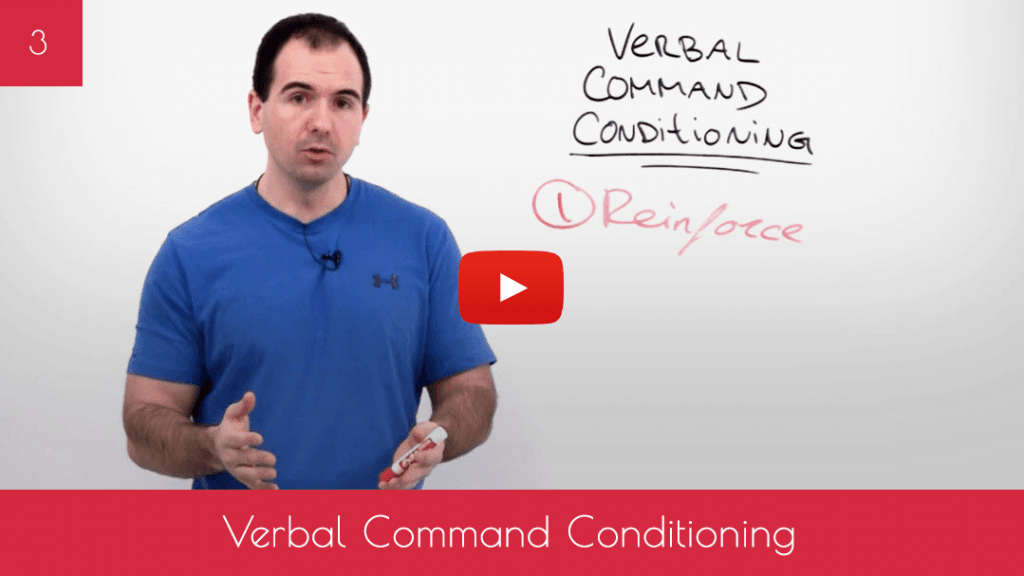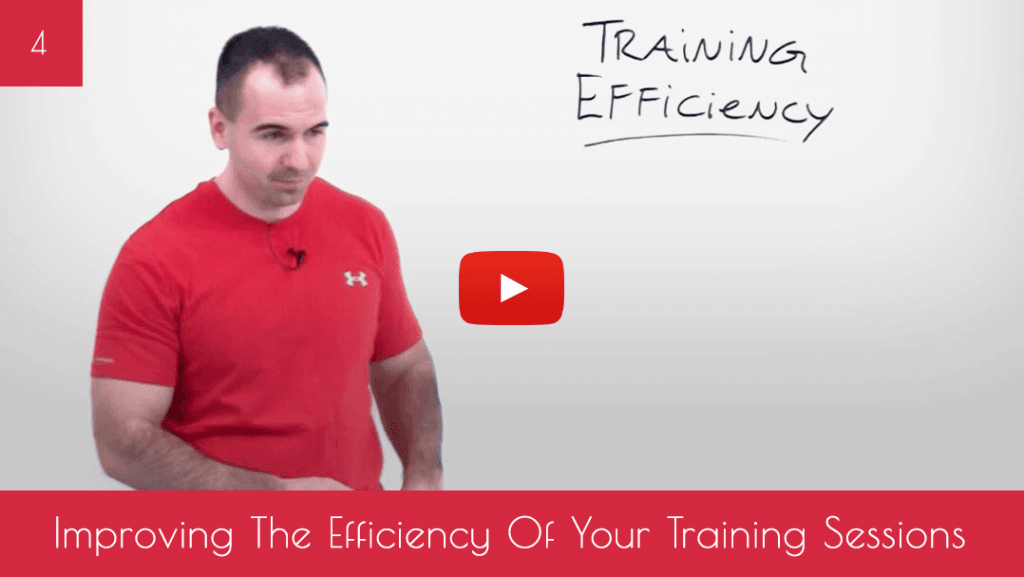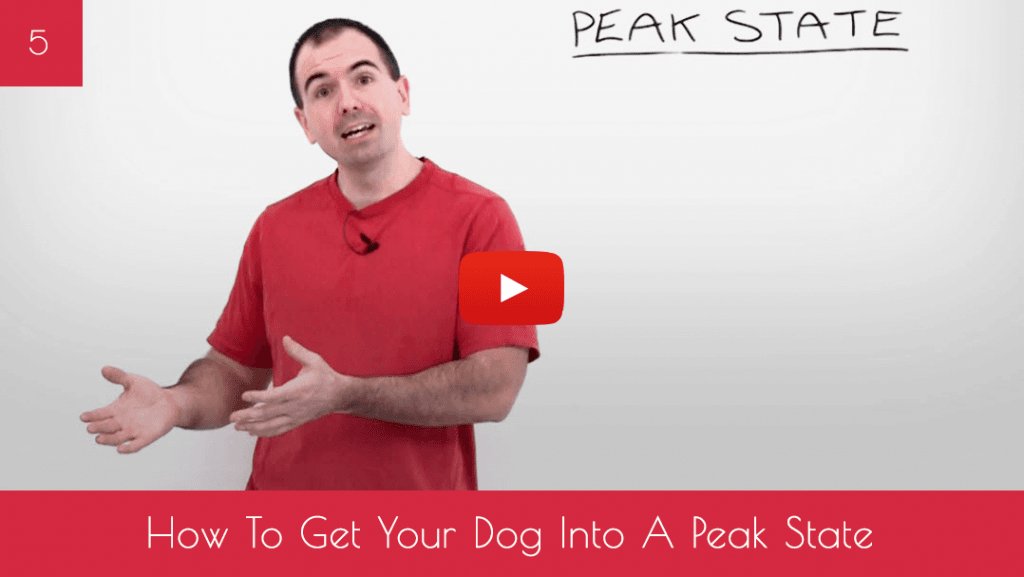Where would you like me to send your FREE 5-part video series?
Almost there!
Please complete the form below and we'll send it to your inbox.
We respect your privacy!
You may unsubscribe from our mailing list at ANY time.





OOPS… I totally said the word pawn in french, which is “pion”. 🙂
Great video Jean, thank you so much! Well presented and easy to understand. And LOL yes I did know pion was French for pawn but great you added it for those who may not know.
Hi Jean,
What do you mean you are not a professional dog trainer? You are Jean Cote – aka “the Dog Training Guy” Somebody has forgot to tell you something about your job description lol…
Thank you for the great videos on positive training techniques.
Keep doing what it is you do.
Cheers,
Todd
Thanks Todd! 🙂
Hi, my question is should you always use a clicker when shaping? Where I live there are no pet stores so I would have to drive 2 hours to go get one or order online, is there anything else that I can use?
Hi Sarah, thank you for your comment. The reason that a clicker is used is to “mark” the behavior that you are rewarding. It’s more for accuracy, to let your dog know exactly which behavior earned him the positive reinforcement.
The clicker is only one kind of markers, I often use the word “yes” instead of a clicker … but a clicker is better because it sounds exactly the same, every time … PLUS some say that it is physically quicker to click a clicker than to say a word (although I haven’t studied this to length). But clickers are really cheap, you can get one for about $2, the one that I prefer is the iClick, but it’s not often available in stores. Alternatively, you could use one of those bottle caps that can make a noise when you push in the middle.
Hope this helps. 😉
Thank you so much for this lesson. I’ve known something about how dolphins are trained but this was so well broken down and clear that it’s made a big difference in how I’m working with my dog!
Thank you so much for the videos. I am so encouraged as this is basically how I teach and how I teach the members of my club (Swindon Dog Dancing School) but you video explains so clearly and simply. With Charlie I have taught him to go to a object to pivot round with his back feet. I had to write out the steps just as you show on the video. I wish that you were in the uk and able to do training days..
Fantastic! Great job on teaching your dog the ‘pivot’ trick. 🙂
Dear Jean,
This is great! I have used shaping but only maybe at a three or four step level of complexity. I love your idea of visualizing exactly what it is you want your dog to do from both your perspective and that of your dog’s and then making an actual list of each step it will take. I can’t wait to try this!
With regard to the chess trick, it is really creative. I can see how a dog might look at and even sniff the pawn if it’s just you and the peon and the dog and nothing else to distract him. But did he just pick up the pawn naturally, like from general curiosity and so we need to be patient and wait for our dog to do this, or was he used to using his mouth for other tricks, such as in the command “take”?
I would give my dog a dog biscuit shaped like a bone and say “take” and she would only open her mouth slightly, take the biscuit and hold only half of it in her mouth leaving the other half (with the two nubs of bone sticking out of her mouth and even look around to the amusement of onlookers until I released her to go ahead and eat it.. After I taught her this trick using “shaping,” it was easy to teach her to put other things in her mouth and hold or carry them for periods of time like the newspaper or the mail, but alas, nothing as clever as the chess piece. I am going to think more “out of the box” from now on…you’re inspiring me! It would seem that maybe teaching a dog to “pick up” something would be a foundation trick for teaching (by shaping) a host of other behaviors.
Anyway, I am truly impressed with what you have been able to do with your dog. Granted, she’s pretty intelligent but I am just wondering if you had to do something to the pawn in order to get your dog to pick up the piece in the first place. I can’t try this out right now as my dog Sasha recently passed away and while I know that down the line my home will once again echo the pattering sound of another canine companion, there are other reasons, along with grieving her loss, that keep me from having a dog at this time.
Jean, in just two videos, I have learned so much from you both directly from your suggestions and demonstrations and also by getting me thinking differently about things I already knew and have tried. Thanks so much!
Please continue to share the richness of your dog training experiences. When I heard your opening remarks about not being a “professional” dog trainer, I couldn’t help but think about a saying we have in the field of Education – “certified is not necessarily qualified.” This applies to every profession in the book. Believe me, there are those who claim to be “professionals” in particular fields because they have a piece of paper that boasts of their “training” in that field and so are considered “certified” but based on their actual work, are far from being “qualified” to do the job, Your success is evidenced in what your dogs do. Thus you are duly qualified to speak on the subject. And as far as being certified…well, it’s called “hands on….on the job….first hand….etc.” training. So, in your case, you may not have a certificate hanging on your wall that says “Professional Dog Trainer” but without a doubt, you are one! I think all your viewers would agree.
God bless,
Gina
Hi Gina,
No I didn’t do anything “special” to the peon. All I did was place it between me and her and I’d reward her for looking at it, and gradually increased the criteria until she picked it up.
Thank you for your kind words on being a “Professional Dog Trainer”. I am constantly learning and will at one point take a certification test. 🙂
I am working on it.
Great video. Very well explained.
Really enjoying your presentations. I have tried using a clicker and my dog enjoys learning new tricks. The problem I have is that when trying to teach a new trick, he will go through the old tricks and he ends up getting frustrated. I would appreciate your help. Thanks for reading this.
Hi Rebecca,
This is totally normal and is actually a good thing! This shows that your training is effective and your dog is actively trying to get to the reinforcement (your treat).
You might want to consider making is easier for your dog to be successful when training a new trick. This involves setting up your environment properly so that your dog knows there’s something new to do. For example, if I wanted to train my dog a new trick that involved a cardboard box, then I’d put it in the middle of the room and align my body so that it faces the box. Then I’d reward for simply looking at the box.
Hope this helps. 🙂
I don’t see the play button.
Hi Pam, sorry you are having trouble. Could you tell me which browser or system you are trying to watch it on? You should be able to just click on the video and it should start automatically.
I’ve done shaping with my dog before…but this has taken it to a new level! The idea of a ‘shaping map’ is great preparation for what I’m going to do with my dog; just wonderful insight that you have into dog training! I also really liked your ‘release cue’ (‘break’). I have a release cue of ‘OK’ for other things (like wait or leave) but I think it would be good to have one specific to training, and ‘break’ seems to fit this criteria! And it can be accompanied by another reinforcement of play, stroking etc, which reinforces the reward element of training as an end in itself, and makes the connection between training and fun, and this might not be appropriate for things like the ‘wait’ cue, where you perhaps want your dog to pause and then do something else. So it makes sense to me now to have a specific cue that marks ‘you’ve done it great, let’s have a break’
To reflect Gina’s comments that ‘certified is not necessarily qualified’, I agree entirely! I work as a tutor within a University setting that runs courses in psychotherapy/counselling. There are academic staff as well on the training, but part of the remit of both tutors and academic staff is that they have an established practice with clients, that they not just be ‘academics’, who undoubtedly have a lot of knowledge, and can ‘talk the talk’, but also have to ‘walk the walk’. You, Jean, are absolutely qualified because you ‘walk the walk’!
Thank you for your generosity in sharing your experience with us dog lovers.
Maggi (and my GSD Solas)
Thanks Maggi! Your kind words are much appreciated. The main reason why I use the release word “Break!” is because “Okay” is used way too much in normal conversation. I already used it three times today and it’s only 10AM – yet I haven’t used the word “Break”. 🙂
I like how you showed each step in shaping with your dog. I am a hands on learner and some what visual and this was very helpful.
I am VERY impressed with the clarity of these training sessions. Jean is obviously a loving, careful, anticipatory dog owner. It is also obvious that he and his dogs derive great pleasure from working together. They are all lucky to have one another!
Thank you very much Sharon!
Thank you Mr. Cote!
We have a mini Labradoodle….13#’s and she walks on her hind legs for a long time when she wants attention or gets excited seeing children she knows. Any thoughts on how this could be made into some sort of trick. Friends recently asked me if we taught her this move….we didn’t…but it makes me think she could be a circus dog when she does it.
You make a very clear and calm tutorial. I think in order to have my dog pick up her toys and put them in her box, I’ll have to try your shaping method….very small steps. I tried it while ago, and I think any time the toy went in the box, it was purely accidental, and she really didn’t recognize why we got so excited. The toys end up all over the house. I saw a video where the dog was told to clean up, and he ran around the house and picked up all his toys. Wouldn’t that be a great help.
Thank you for your efforts, they really are appreciated.
Mareline
Hi Mareline,
Walking on hind legs is a great trick, I think you should definitely reward it and put it on cue!
You should be able to “Shape” your dog to pick up his toys and put them in the box. But you are right, in the beginning it is purely accidental whether the toy gets inside the box or not. That is when the dog is just learning the behavior so your job is to make sure that you give your reward ONLY when the toy lands in the box. After a few repetitions, your dog will figure it out. 🙂
P.S. Start with just one toy, it will make training much easier. 🙂
Hi…..great video and so nicely presented. Just an observation……how about throwing the treat away from the pack so you are resetting the trick each time? I just noticed she was being clicked for a variety of behaviours she offered and I wasn’t really sure which one was getting the reward, as at times she had both feet on the pack but then was clicked for the head rub? She is obviously so keen and works well for you. So lovely to see. Keep the videos coming.
Hi Sharon, thank you for your comment.
Throwing a treat away is an excellent way of “resetting” the training, however the dog will usually come back and do the same behavior that was just reinforced. In the beginning learning stage, I want to focus on the next behavior on the shaping map. I will usually use the “reset” technique once the dog has mastered the final behavior or if my dog needs a “break”.
As for rewarding the wrong behavior, it wasn’t intentional – actually my timing wasn’t perfect in this session. But my dog still figured out what I wanted in just a few repetitions. 😉
Lovely, clear explanations, thanks! Your border collie is beautiful. I look forward to using your methods on my two springers.
Awesome Vid!! Thank you so much for taking the time to do this!
Hi Jean,
We are living in Thailand and watch your videos as often as possible. The problem is that where we live there is no wifi and for the internet we have to use a simcard. That is making it almost impossible to watch your videos, because every 10 seconds the system have to reload the video. Is it possible to download them somewhere? In two weeks we get a German shepherd puppy and we are looking forward to it. I had shepherd whole my life, and that is the only thing I miss here! You say that you are not a professional dog trainer, but I tell you something: you are better then a lot of professional dog trainer (and I met a few in my life), an we hope to see more of you videos and very useful tips!!
Regards, Martin & Thongpoon, Pranburi, Thailand.
p.s. I hope my english is understandable (I am Dutch)!
Hi Martin, I believe you can hit the play button, and then hit the pause button. This will cause the player to load the video and then when it’s loaded, you can push play for a good playback. This is called buffering. Hope it works!
Great ideas, I have several Aussies I have been working with mine and in my class I have always believed in positive behavior methods. Thank you for all you are doing.
Hi great Video how do I download the video so I can go back to it. I think I have the memory span of a gold fish.
You can’t save the video but you can come back anytime you want to watch it online. 🙂
Seriously, you are more than good in what you are doing and thank you so much for sharing the video but the problem about my dog WILLIE is that he is too playful and he always feel safe with me. He always wanna play around me even when I’m trying to train him. So that he wouldn’t listen or concentrate on anything so that’s why I give up on training him most especially because I don’t wanna get mad at him and Injure him though I always want him to be unique in every way.
Absolutely the best explanation of shaping I have ever seen. The way you break down the steps makes it very easy to understand. I think that sometimes when I am shaping a behaviour I am moving ahead too quickly instead of using very small increments of that behaviour. Thanks so much. Looking forward to more. Right now I am working on dropping a ball through a small child’s basketball net. And I want to teach my dogs (2 Standard Poodles) to put their toys in a toy box. I have already shaped them to wash their feet in a pan of water before coming in the house. I use a long low container and they step into the water and then turn back and forth several times to wash their feet.
Again thanks for the great videos.
-Jeanette
B E A Utiful
Jean, love this. I train my dog to play pat-a-cake this way . ( before I really knew about shaping and behavior chains). Do you have a video that teaches the beginning of marking ( clicker or saying yes ) ? And when to add the cue? I’m transitioning from yes to clicker because I like to try different methods. The dogs seem to like it…. They get positive reinforcement either way and they learn 🙂 great website, very useful information.
Hi Lynn,
I will send you another video about verbal command conditioning, stay tuned. =)
Hi Jean,
I really enjoyed the video. I have done some clicker work with my lurcher cross, Ishka, and he really enjoyed it so what you have shown in your videos has given me the incentive to get back to it. I am just wondering do you ever include a word at the end of the process to distinguish between different tricks?
Niamh
Hi Niamh, no in order to condition a command you have to say it just before the behavior occurs. I have another video on this topic which I will send you via email shortly and should explain my entire process. 🙂